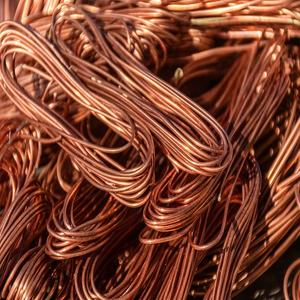1. Introduction
In the past 48 hours, global copper prices have surged amid renewed industrial demand and supply chain concerns, according to the London Metal Exchange (LME). This uptick directly impacts everything from copper rod to copper strip and piping—highlighting just how central this metal is to modern infrastructure. Whether you’re an electrician installing an earthing system, a welder joining copper components, or a recycler stripping copper wire for scrap, understanding copper rod and its variants is essential.

Copper rod—also referred to as rod copper—is a foundational material in electrical, construction, and manufacturing industries. Its high conductivity, corrosion resistance, and malleability make it ideal for everything from grounding systems to precision welding. In this article, we’ll explore the many forms and applications of copper rod, compare it with related products like copper strip and copper pipe, and offer insights into pricing and best practices.
2. What Is Copper Rod?
A copper rod is a solid, cylindrical bar of high-purity copper, typically produced through continuous casting or extrusion. It serves as a raw material for drawing wires, machining components, or direct use in applications like earthing and welding. Depending on the intended use, copper rods can be made from pure electrolytic copper or copper alloys like beryllium copper.
Common specifications include diameters ranging from 5mm to over 50mm, with lengths customized for industrial needs. You’ll often hear terms like copper round bar or round bar copper—these are essentially synonymous with standard copper rod in many contexts.
3. Key Applications of Copper Rod
3.1 Earthing and Grounding Systems
One of the most critical uses of copper rod is in electrical safety systems. The copper earth rod (also called earthing rod copper or ground rod copper) is driven into the soil to provide a low-resistance path for fault currents. For cost-effective solutions, many opt for copper bonded earthing rods or copper clad steel ground rods—where a steel core is coated with copper to combine strength and conductivity.
Popular variants include copper bonded ground rod, copper clad earth rod, and copper clad steel earth rod. These are widely used in telecom, power substations, and residential grounding. When shopping, you might search for ‘earthing rod price’ or ‘copper earth strip 25x3mm price’ to compare options.

3.2 Welding and Brazing
Copper rod for welding is essential in joining copper components without compromising conductivity. Copper welding rod, copper to copper welding rod, and welding rod copper are common terms for filler materials used in TIG or oxy-acetylene processes. For lower-temperature joins, copper brazing rod or copper to copper brazing rods are preferred, especially in HVAC and plumbing.
These rods ensure strong, conductive joints in applications ranging from air conditioning copper pipe repairs to industrial busbar fabrication.
4. Copper Rod vs. Related Copper Products
While copper rod is cylindrical, other forms serve different purposes. Copper strip (sometimes misspelled as copper stip or copper stripes) comes in flat, thin sheets—ideal for busbars, earthing strips, or even decorative uses like copper roof strip. Variants include flat copper strip, 1mm copper strip, beryllium copper strip, and nickel plated copper strip.
For recyclers, questions like ‘best way to strip copper wire’ or ‘fast way to strip copper wire’ are common. Stripping copper wire for scrap—whether from motors or cables—requires care to avoid burning copper wire for scrap, which degrades quality and value. Tools and techniques for stripping wire for recycling are widely available, and many seek ‘copper strip near me’ when sourcing materials.
Meanwhile, copper pipework remains vital in HVAC and plumbing. Aircon copper pipe, air conditioning copper pipe, and ac copper pipe price fluctuate with market trends. Sizes like 15mm copper pipe, 22mm copper tube, and 3/4 copper tubing are standard, with proper copper pipe soldering ensuring leak-free joints.

5. Pricing and Market Trends
Copper rod price varies based on purity, diameter, and market conditions. As of this week, rising demand in renewable energy and EV infrastructure has pushed prices upward. Similarly, copper strip price, copper ingot price, and 1oz copper price reflect global commodity movements.
When comparing materials, note that copper bonded or copper clad options offer savings over solid copper while maintaining performance in grounding applications. For bulk buyers, searching ‘copper bars for sale’ or ‘roll of copper strip’ can yield better deals.
6. Practical Tips and Considerations
If you’re working with copper:
- Always verify conductivity requirements before choosing copper bonded vs. solid copper for earthing.
- Use proper ventilation when copper rod welding or brazing to avoid fume inhalation.
- For scrap recovery, mechanical wire strippers are safer and more profitable than burning copper wire for scrap.
- When bending copper pipe, use a spring or pipe bender to prevent kinking—especially for 1/2 copper pipe or 22mm pipe copper.
Also, don’t confuse copper strip with copper tape for snails—a niche gardening product unrelated to electrical use!
7. Conclusion
From copper earth rods safeguarding buildings to copper rod welding enabling seamless electrical connections, this versatile metal remains indispensable. Whether you’re sourcing copper round bar for machining, comparing ac copper pipe price for an HVAC install, or stripping copper wire for recycling, understanding the nuances of copper products ensures efficiency, safety, and cost-effectiveness. As global demand grows, staying informed on copper trends—from rod to strip to pipe—will keep you ahead in both professional and DIY projects.
Our Website founded on October 17, 2012, is a high-tech enterprise committed to the research and development, production, processing, sales and technical services of ceramic relative materials such as Copper. Our products includes but not limited to Boron Carbide Ceramic Products, Boron Nitride Ceramic Products, Silicon Carbide Ceramic Products, Silicon Nitride Ceramic Products, Zirconium Dioxide Ceramic Products, etc. If you are interested, please feel free to contact us.

